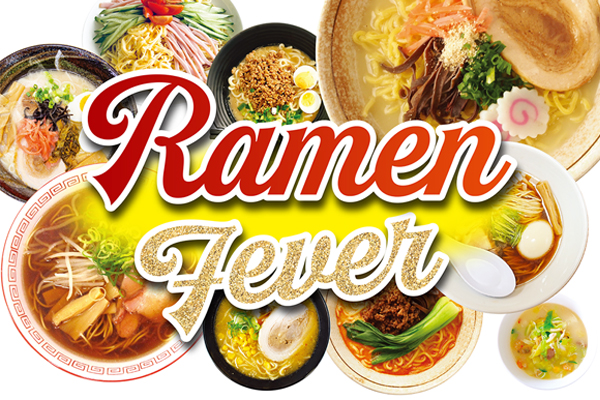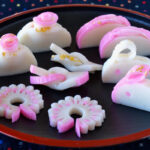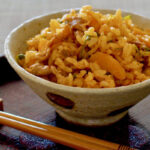Ramen is a Japanese noodle dish which originated in China with three main components – noodles, soup and toppings. Although the noodles are the most filling part of ramen, and the topping is probably the most fun, the soup is the most crucial part of ramen. The soup is generally made from stock based on chicken or pork, combined with a variety of ingredients such as kelp, bonito shavings and vegetables. The soup is often flavored with soy sauce, miso or salt.
Five Basic Soups
醤油 SHOYU RAMEN
Seasoned with soy sauce, shoyu ramen has clear, brown broth. It is the most common flavor offered by almost all ramen restaurants across Japan.
味噌 MISO RAMEN
Developed in Hokkaido, the northernmost part of Japan, miso ramen is seasoned with miso. Rich and hearty soup with robust flavor is ideal for cold weather.
塩 SHIO RAMEN
Seasoned with salt, shio ramen has a clear, slightly yellowish broth. It is the lightest soup recommended for health conscious individuals.
豚骨 TONKOTSU
(PORK BONE) RAMEN
Tonkotsu ramen is made by boiling pork bone for a long time. It features a thick, cloudy, white broth.
海鮮 SEAFOOD RAMEN
The soup is extracted from a wide variety of seafood such as dried bonito, anchovy, scallop, shrimp and seaweed. It is popular among health conscious individuals.
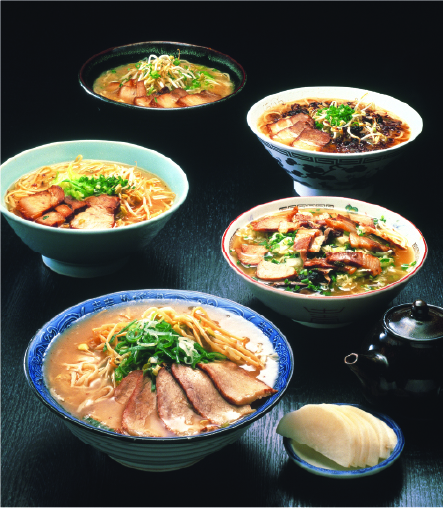
WHAT’S MORE…
THICKNESS OF THE NOODLES
Have you noticed that the thickness of the noodles is different depending on soups? Thickness is categorized into extra thin, thin, medium thin, medium thick, thick and extra thick noodles.
Thick noodles have a firm texture. Due to its thickness, it takes longer to cook and takes longer to absorb the soup, retaining the texture longer. On the other hand, thin noodles take a shorter time to cook and are faster to absorb the soup. To keep the firmness, thin noodles are cooked al dente.
So what’s the big deal about the thickness of noodles in ramen? Since thick noodles absorb the soup slowly, they have less flavor of the soup on noodles. On the other hand, thin noodles absorb the soup quickly; therefore, they have more flavor of the soup on the noodles. Accordingly, thick noodles are recommended with rich, strong flavored soup while thin noodles are recommended with delicate flavored soup.
YATAI RAMEN (RAMEN STALLS)
Yatai Ramen is often a portable stall and also called “charumera” since a type of a musical horn called charumera was used to announce their presence. Today, due to the locations and regulatory issue, chances to encounter Yatai Ramen is decreasing, but do not lose your hope! People have arisen up to protect Yatai Ramen! There are many places all over Japan offering a place to enjoy the atmosphere of Yatai Ramen.
Delight of Yatai Ramen includes the casual conversation with the chef or the sensation of the warmth provided by ramen in the cold winter night. You can say that the atmosphere makes the ramen taste better!
Some Yatai Ramen stalls have unique rules such as bringing your own bowl. It is an added fun to experience ramen with certain Yatai’s rule.
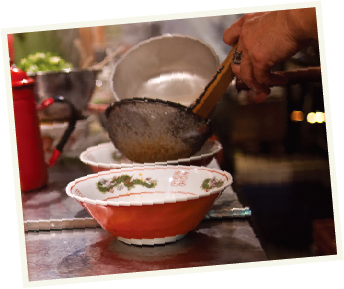
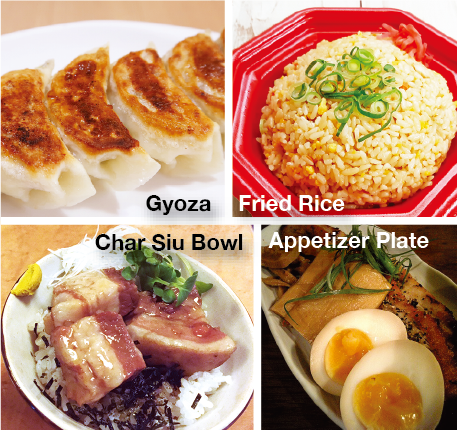
SIDE DISHES
Many ramen restaurants features are not only delicious ramen but also satisfying side dishes. It is lined up with authentic and delicious side dishes such as fried rice made with char siu with their signature sauce and gyoza (dumpling) which cannot be beat by specialty restaurants.
TSUKEMEN
Categorized under ramen, Tsukemen is a type of noodles with cold (or hot) soup on the side for you to dip. The soup is normally flavored stronger than regular ramen. Just a few years ago, there were many people who never had Tsukemen before, but now, Tsukemen specialty restaurants are making appearances as well as many variations such as vegetable potage. Keep your eyes open for new creations!
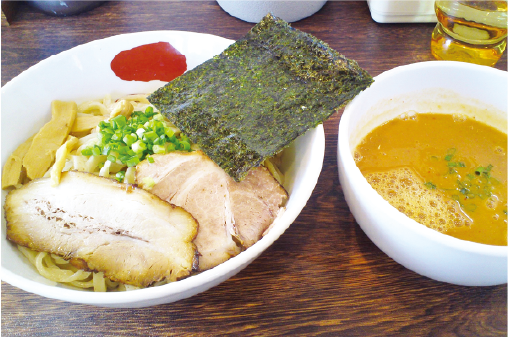

DO YOU KNOW RAMEN
WITHOUT SOUP?
Recently in Japan, ramen without soup is making an appearance. It called “Abura Soba” or “Maze Soba”. The three components of ramen – soup, noodle and toppings – are all tossed together equally presenting their existence, featuring the flavor you could not have tasted before. You will mix soy sauce based sauce, vinegar, and oil. Although you are adding vinegar, the overall flavor is mild and not tangy at all. If you prefer light taste, you can add extra vinegar to your bowl. Would you call this a creation by obsession of Japanese chefs or a non-traditional invention?

Fun Facts
1 Some say that Tonkotsu Ramen was born because someone forgot to turn off the fire. The soup, which was supposed to be clear, became cloudy by boiling the pork bones in high heat for too long. Oops!! But they tasted the soup anyway, and it was… Yum!
2 The original Tonkotsu Ramen was made by boiling pork bones, without removing the foam that forms at the surface. It had a strong aroma, so women disliked it. It was only in recent years when ramen shops started to make Tonkotsu Ramen without a strong smell.
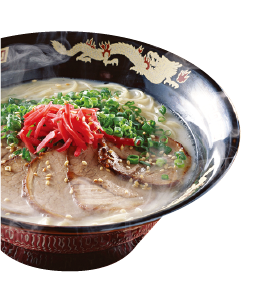
3 Adding raw onions or raw egg will make the dish less salty.
4 Tokushima Ramen was born in Tokushima prefecture because of the Nippon Ham (formerly Tokushima Ham) food processing company. The soup is made from leftover pork bones. By the way, adding rice to leftover soup is the proper way to enjoy Tokushima Ramen.
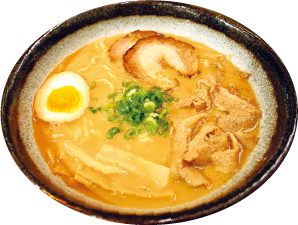
5 Toyama prefecture’s specialty, Black Ramen features a dark color from the soy sauce. Since there wasn’t enough food, ramen was made a main dish. Servedwith plain rice, it was made salty with plenty of soy sauce.
6 The taste changes with the temperature, or one can change the taste by changing the temperature! Slightly saltier in summer and less salt in winter – this will give the same flavor although the amount of salt varies.

REGIONAL RAMEN OF JAPAN
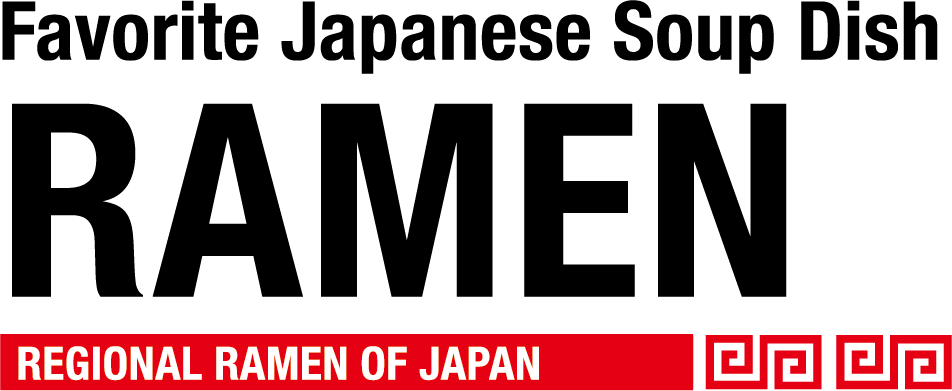
In Japan, each region has its own unique style of food called “gotouchi gurume (regional gourmet dishes).” Similarly, there are also different types of local ramen in various areas called “gotouchi ramen.” All kinds of gotouchi ramen are quite different from each other and have unique characteristics, so let us briefly introduce you the characteristics of some of the most famous regional ramen of Japan!
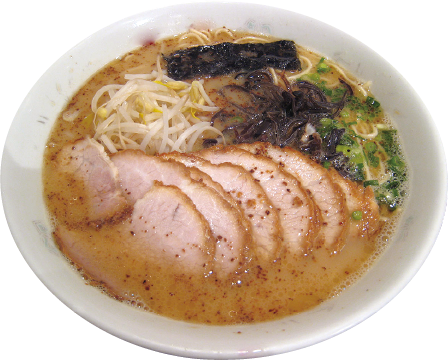
熊本ラーメン
KUMAMOTO RAMEN
Kumamoto prefecture is on the island of Kyushu and has its own tonkotsu ramen that is different from the tonkotsu ramen eaten by their neighbors of Hakata in the Fukuoka prefecture. Not only pork bones but also some chicken bones are used in the soup of Kumamoto ramen and the noodles are way thicker than what is used for Hakata ramen.
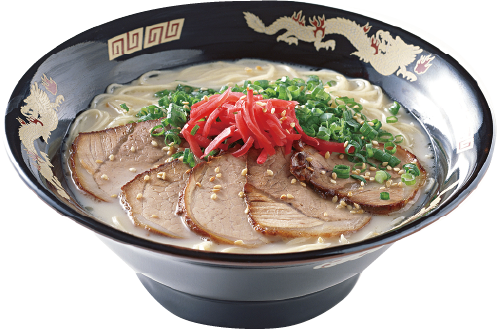
博多ラーメン
HAKATA RAMEN
Hakata tonkotsu ramen is probably the best-known ramen style in Los Angeles. The creamy, white broth is made from pork bones cooked over high heat for days and is very flavorful. Hakata ramen noodles always have to be thin, straight noodles and the classic toppings are scallions, chashu pork, cloud ear mushrooms and pickled ginger.
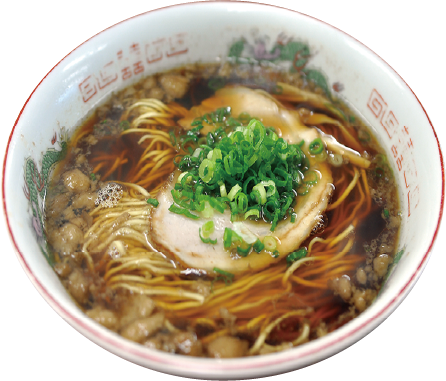
尾道ラーメン
ONOMICHI
Onomichi is a city in Hiroshima prefecture and has its own style of shoyu ramen. Typically, a lot of chicken bones and some local seafood are used for making the broth, and cooked lard and suspended pork fat are added in the soup. The soup goes well with flat-wavy-chewy noodles.

和歌山ラーメン
WAKAYAMA RAMEN
Wakayama is a prefecture located in the Kansai region and the locals often call their ramen “chuka-soba (Chinese noodles).” The soup is made with a pork broth and a strong soy sauce. The noodles are usually thin, firm noodles that are similar to Hakata ramen. It’s not too heavy like tonkotsu ramen can be.
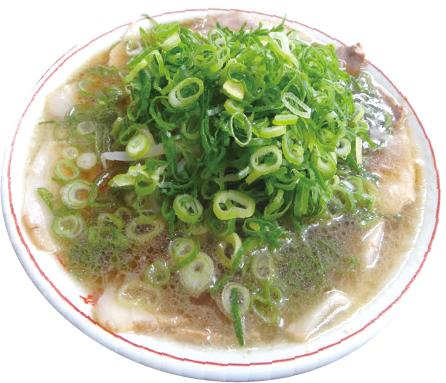
京都ラーメン
KYOTO RAMEN
In Kyoto, one of the most historical Japanese cities, there are two major styles of local ramen: light, simple shoyu ramen and very thick chicken soup ramen. The soup of the former style is made of pork broth and dark soy sauce, and the latter’s rich soup is made mostly from chicken.
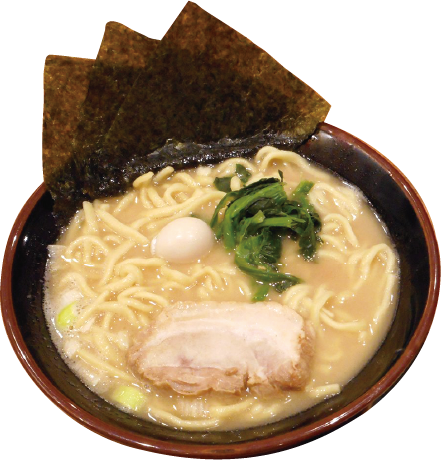
横浜ラーメン
YOKOHAMA RAMEN
There are three famous local ramen in Yokohama. Sanma-men and Tan-men are traditional dishes established with Chinese noodle soup influence. The other one is a newcomer called Yokohama Ie-kei which typically contains thick noodles, a shoyu flavored rich soup made with pork broth and chicken fat.
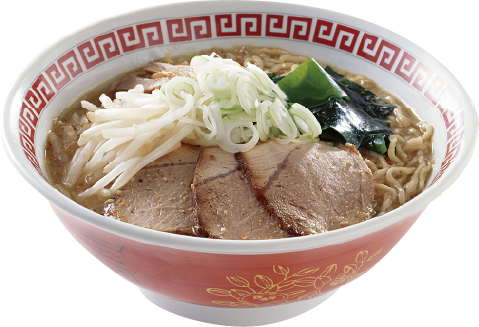
東京ラーメン
TOKYO RAMEN
The soup of Tokyo ramen is typically made with a complex broth of clear chicken or pork stock and mixed dried fish stock and seasoned with soy sauce. Usually, scallions, nori, chashu pork, and bamboo shoots atop curly noodles. It’s a “simplicity is the best” kind of ramen.
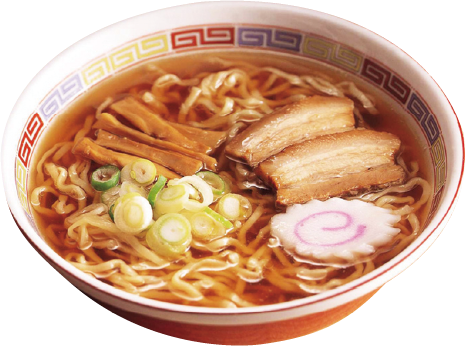
喜多方ラーメン
KITAKATA RAMEN
Kitakata is a small city in Fukushima prefecture and their local ramen is typically shoyu ramen. Usually, pork and fish stock are made separately and mixed later to make the soup. The noodles are thick, flat, curly and chewy. It’s highly recommended for people who don’t prefer heavy dishes.

米沢ラーメン
YONEZAWA RAMEN
Yonezawa, a city in Yamagata, is famous for their wagyu beef and simple shoyu ramen. Nice chewy and curly ramen noodles come in a soup made with a chicken and dried sardines broth. The ramen is not heavy or oily at all, so it can be enjoyed everyday.
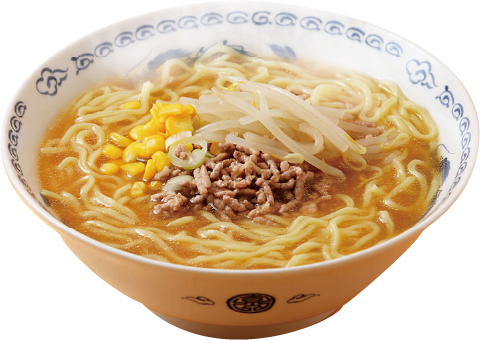
札幌ラーメン
SAPPORO RAMEN
Sapporo, a northern city and the capital of Hokkaido, is best known as the birthplace of miso ramen. Classic Sapporo ramen has stir-fried vegetables on top of medium thick, curly noodles. The ramen contains spicy miso and a lot of garlic and lard, so it’s rich and fatty but very addictive.

The Best Ramen Shops You Find in LA 2022
May 2022 vol. 175

